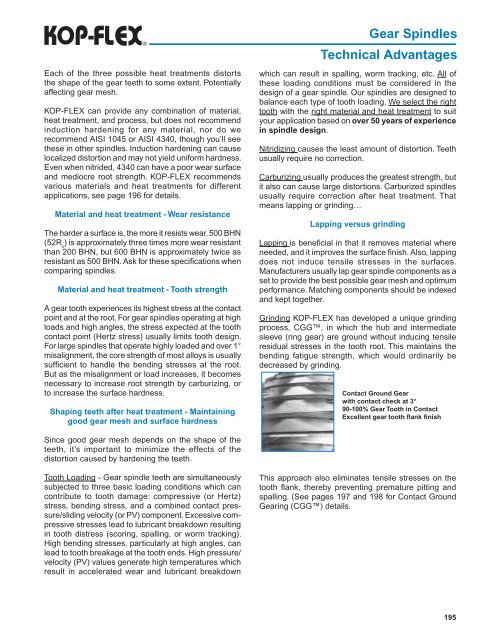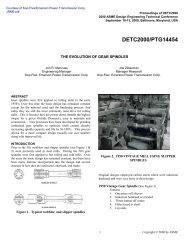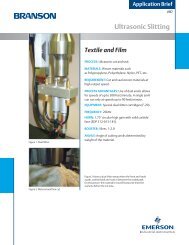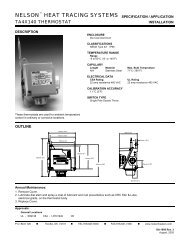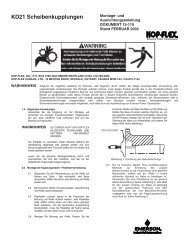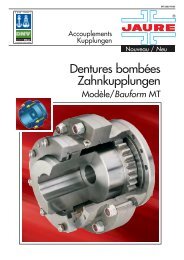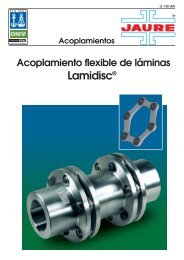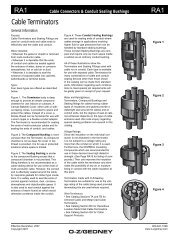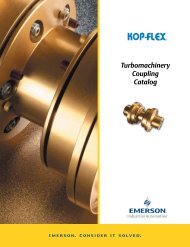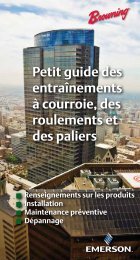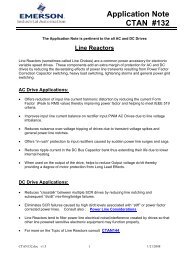Kop-Flex Industrial Coupling Product Catalog - Form 8887E
Kop-Flex Industrial Coupling Product Catalog - Form 8887E
Kop-Flex Industrial Coupling Product Catalog - Form 8887E
You also want an ePaper? Increase the reach of your titles
YUMPU automatically turns print PDFs into web optimized ePapers that Google loves.
Each of the three possible heat treatments distorts<br />
the shape of the gear teeth to some extent. Potentially<br />
affecting gear mesh.<br />
KOP-FLEX can provide any combination of material,<br />
heat treatment, and process, but does not recommend<br />
induction hardening for any material, nor do we<br />
recommend AISI 1045 or AISI 4340, though you’ll see<br />
these in other spindles. Induction hardening can cause<br />
localized distortion and may not yield uniform hardness.<br />
Even when nitrided, 4340 can have a poor wear surface<br />
and mediocre root strength. KOP-FLEX recommends<br />
various materials and heat treatments for different<br />
applications, see page 196 for details.<br />
Material and heat treatment - Wear resistance<br />
The harder a surface is, the more it resists wear. 500 BHN<br />
(52R c<br />
) is approximately three times more wear resistant<br />
than 200 BHN, but 600 BHN is approximately twice as<br />
resistant as 500 BHN. Ask for these specifications when<br />
comparing spindles.<br />
Material and heat treatment - Tooth strength<br />
A gear tooth experiences its highest stress at the contact<br />
point and at the root. For gear spindles operating at high<br />
loads and high angles, the stress expected at the tooth<br />
contact point (Hertz stress) usually limits tooth design.<br />
For large spindles that operate highly loaded and over 1°<br />
misalignment, the core strength of most alloys is usually<br />
sufficient to handle the bending stresses at the root.<br />
But as the misalignment or load increases, it becomes<br />
necessary to increase root strength by carburizing, or<br />
to increase the surface hardness.<br />
Shaping teeth after heat treatment - Maintaining<br />
good gear mesh and surface hardness<br />
which can result in spalling, worm tracking, etc. All of<br />
these loading conditions must be considered in the<br />
design of a gear spindle. Our spindles are designed to<br />
balance each type of tooth loading, We select the right<br />
tooth with the right material and heat treatment to suit<br />
your application based on over 50 years of experience<br />
in spindle design.<br />
Nitridizing causes the least amount of distortion. Teeth<br />
usually require no correction.<br />
Carburizing usually produces the greatest strength, but<br />
it also can cause large distortions. Carburized spindles<br />
usually require correction after heat treatment. That<br />
means lapping or grinding…<br />
Lapping versus grinding<br />
Gear Spindles<br />
Technical Advantages<br />
Lapping is beneficial in that it removes material where<br />
needed, and it improves the surface finish. Also, lapping<br />
does not induce tensile stresses in the surfaces.<br />
Manufacturers usually lap gear spindle components as a<br />
set to provide the best possible gear mesh and optimum<br />
performance. Matching components should be indexed<br />
and kept together.<br />
Grinding KOP-FLEX has developed a unique grinding<br />
process, CGG, in which the hub and intermediate<br />
sleeve (ring gear) are ground without inducing tensile<br />
residual stresses in the tooth root. This maintains the<br />
bending fatigue strength, which would ordinarily be<br />
decreased by grinding.<br />
Contact Ground Gear<br />
with contact check at 3°<br />
90-100% Gear Tooth in Contact<br />
Excellent gear tooth flank finish<br />
Since good gear mesh depends on the shape of the<br />
teeth, it’s important to minimize the effects of the<br />
distortion caused by hardening the teeth.<br />
Tooth Loading - Gear spindle teeth are simultaneously<br />
subjected to three basic loading conditions which can<br />
contribute to tooth damage: compressive (or Hertz)<br />
stress, bending stress, and a combined contact pressure/sliding<br />
velocity (or PV) component. Excessive compressive<br />
stresses lead to lubricant breakdown resulting<br />
in tooth distress (scoring, spalling, or worm tracking).<br />
High bending stresses, particularly at high angles, can<br />
lead to tooth breakage at the tooth ends. High pressure/<br />
velocity (PV) values generate high temperatures which<br />
result in accelerated wear and lubricant breakdown<br />
This approach also eliminates tensile stresses on the<br />
tooth flank, thereby preventing premature pitting and<br />
spalling. (See pages 197 and 198 for Contact Ground<br />
Gearing (CGG) details.<br />
195


